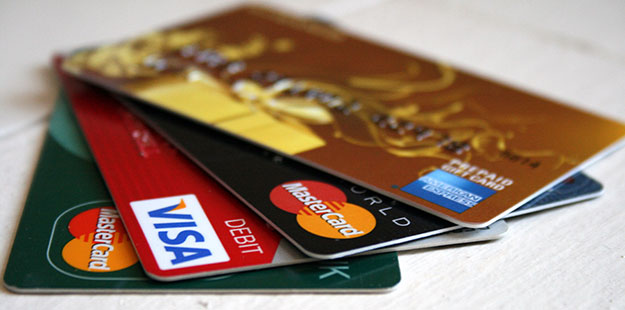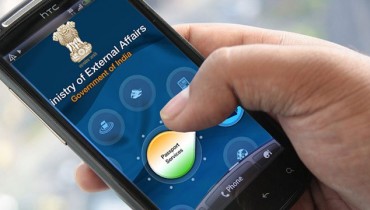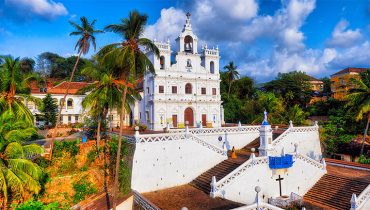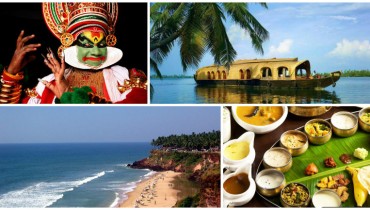
Travel planning to international destinations always throws an important question about money – how does one carry the FOREX (foreign exchange) currency for expenditure while you are abroad? Yeah, sure, you can still carry cash which you may have exchanged at the airport (Forex rates at airports and hotels are the highest). Or perhaps, you prefer travellers’ cheques?
Till last year, international credit cards and debit cards too were an option for transacting abroad. Not anymore. In Feb 2013, the Reserve Bank of India (RBI) mandated that all credit and debit card issuers will, by default, disallow international transactions. However, if the user explicitly requests for international usage, the issuer will allow so, with the caveat that the cards should be EMV chip based and not simply with a magnetic strip. This was done by RBI with the noble intention of reducing credit and debit card fraud – a move welcomed by card users. Hopefully, by now most users’ cards have been replaced by this EMV chip based card. If now, get them right now – it is for your safety. There are however, bound to be some teething issues while the systems are being migrated – or so the banks say.
Enter Prepaid Forex Cards
If you use your Debit or Credit Card when travelling abroad, the transactions or cash withdrawals will be subject to unnecessary interest rates and currency fluctuations. Prepaid Forex Cards save you from the extra charges and also saves you from the hassle of looking for money changers to encash traveler cheques. Since it is a prepaid card, it also helps you budget and plan your expenses. You can load this prepaid forex card with foreign currency in India and use it to withdraw cash in the local currency from ATMs and merchant establishments accepting Visa / Mastercard / American Express Flag cards.
In India, you can get these prepaid forex cards from banks like Axis Bank, Citibank, HDFC Bank, ICICI Bank, State Bank of India etc. You can also get them from Thomas Cook, Tata Finance, Centrum, Matrix Cards etc.
Salient Points of Prepaid Forex Cards
- How it Works. Your prepaid forex card is loaded with funds at the time of purchase. You can use the card for cash withdrawal or for shopping at merchant outlets. With each transaction or cash withdrawal, the balance on your prepaid forex card decreases. You can continue to use your card as long as some funds are available on the card account.
- Reloading Money. If the balance in your card is exhausted, you can reload the card with more funds. Charges are applicable at each reload. Some issuers like Axis Bank and ICICI Bank also allow you to remotely reload money in the card account – but for this you will need to keep a signed copy of the reload form and authorization letter with your family member in India. They, then just go over to the bank / designated agency with the documents and the money and reload the account.
- Charges. Initial charges when applying will differ from issuer to issuer. Charges for re-loading and balance enquiry at ATMs are also applicable. ATM withdrawals attract charges while usage at merchant outlets may not, so you can maximize saving by using the card at POS (Point of Sale) terminal at merchant establishments, swiping the card to make payment rather than withdrawing currency from ATMs.
- Currencies. Most of these cards are multi-currency. But card issuers allow loading money in ONE currency only, and allow cash withdrawal or card usage in the local currency of the countries you travel. e.g. you get a card loaded with Euros since you will be travelling to multiple cities in Europe. However, if your trip also includes UK, then the currency conversion from Euro to GBP (Great Britain Pound) will be applicable if you use the card in UK. You can get ONE card only for one currency and may get additional card in different currencies, if you so wish.
- Other Features. The card may also have features like travel insurance, emergency assistance and web-based account management to allow you quick access to transaction details and also to check card balance.
- Applying. Applying for the prepaid forex cards is easy – you just submit your passport, A2 Form (available with issuer or downloadable from RBI site), PAN card photocopy, air ticket and perhaps (depending on the issuer) your visa granted by the foreign country. The issuer is at liberty to ask for additional documents e.g. address proof if the present address is not the same as in the passport.
- Regulations. Usage of these forex / travel cards should be in strict accordance with the regulations of the Reserve Bank of India (RBI) and Foreign Exchange Management Act (FEMA) regulations. The FEMA Limits are as follows:
| Purpose | Limit |
|---|---|
| Basic Travel Quota (BTQ) – For Holidays, Personal visits etc. | US $10,000 per financial year |
| Business Travel | US $25,000 per Trip |
| Immigration – For people who settle abroad | US $100,000 per year |
| Employment Abroad | US $100,000 per year |
| Medical Treatment | US $100,000 per year |
| Studies Abroad | US $100,000 per academic year |
Some Points for Caution
- Some times, hotels take a pre-authorization on your credit card before check-in. A Pre-Auth is essentially blocking of a tentative amount on your card. This amount is not available to you unless it is settled which is AFTER you check out from the hotel. It is recommended NOT repeat NOT to use your pre-paid forex card when you check in at a hotel. Use any other credit/debit card for this.
- One can retain the card only if the balance remaining on the card is less than $2000. If the balance is more than US$ 2000 or equivalent in other currencies, the amount needs to be refunded within 180 days from the date of arrival in India. In case refund is not made on time, the card would be suspended and the card holder can face legal action. This is as per RBI regulations.
As you can see, getting a prepaid forex card or travel card is a hassle free way to spend money while travelling abroad. Before you get one, compare different offerings and then get one. Go ahead and comment on this – fellow travellers will appreciate and benefit from your experience on any of prepaid travel cards.






Just a headsup, dont go for matrix forex card as they dont give you any proper info and if you have any balance forex remaining in your card after coming to india they will take their sweet time around 10-12 days to refund your money and they will rob you of around 30% and state that they are some damn fees. example, if you have Rs.100000, they will refund you only 70000 to 72000. no bank in the world will rob you like this. I really repent why i took this card once and am never going to use it in my life.
Thanks for your comment, Mani. Your experience may benefit other travellers considering various forex card options.
How significant is the difference in charges when we use an Indian credit card in the US as against a prepaid Forex card? We do also pay a charge while loading the Forex card, hence the question
Hi,
The difference depends on the bank issuing the cards. The main advantage of using a prepaid forex card is that you lock in the forex rates, especially if it is wildly fluctuating. Yes, one pays different charges on both cards including flat charges for cash withdrawals – however in this respect credit cards will be even more expensive since the interest on cash withdrawal begins from that time till you repay it- this will be the most expensive loan! Of course, one should check all charges and then take the card that suits you.
If you use a Credit Card overseas you are charged 1.7%-3.5% extra as foreign currency conversion charges plus your account will be charged for a currency difference fee from day of purchase to day of actual trade of the forex by the bank, the fee is between Rs.6 to Rs.11/Rs.1000 this is in case you use at Point of Sale or Online transaction , in case of cash withdrawal it depends of the issuing bank, if its a PSU or Private Indian Bank the minimum charge is Rs.150 to Rs.300 per transaction , some foreign banks of India like DBS and Deutsch Bank offer free cash withdrawal overseas, foreign banks ATM withdrawal charges are lower compared to PSU or Private banks. ( the charges are same for debit cards too)
Conversion Charges:
Deutsche Bank Debit Card 1.7%
Union Bank 2%
HDFC Dinners Club 2%
HDFC Visa/MasterCard 3.5%
SBI Card 3.5%
ICICI Bank 3.5%
Rupay Cards – may be lower than 3.5% because its using Discover and Dinners club network overseas and both of them charge lower than 3.5%.
Not able to get my forex card in uber usa. Has anyone faced similar issue
I am also not able to use forex card in uber.. Do u know a workaround
Forex cards cannot be used in India…but if you are using it in for Uber at some other place it should work.
Hi Author,
I m going for a studying in UK… My stay period is 3 months… Can u tell me what would be cheaper for me… Using a forex card or withdrawal of cash from ATM by my international debit card ( issued by IDBI bank)…
Thank u… Waiting for ur reply
If you can get a deal from forex card issuer (waive off fees etc), then go for forex card, else your international debit card should be fine. If you do use your debit card, inform your bank in advance or else they might block it after seeing some withdrawls in a foreign country – this is a security drill that most of them follow…
Hello Author,
I am going on a trip to Italy, France and Spain. My travel period is of 18 Days.
Can you tell me if using icici Travel Card is a good option?
And if I use icici Travel Card, how much euros I should have in my card? (not a shopaholic, only need it for local travel and food)
Thank you.
Waiting for your reply. 🙂
Hi, ICICI Travel Card is a good option. I had taken the Axis Bank Card to the countries you are going to and loaded it with 2500 Euros, since I had done all my tour booking online including the guides, museum passes, cabs etc. I just needed the Euros for food, tips and some offbeat sightseeing which didn’t figure in my itinerary earlier. Some people (including us) have food at small restaurants / fast-food joints or even the supermarts like Carrefour on most days and splurge once a week in some fancy restaurant with wine and all. This tactic may cost about 60-75 Euros a day per person for the meals on an average. Of course, street food and supermarts will cost less. So, if you are asking for one person, I would say anything between 1800 to 2000 Euros should be fine. Have a great trip…you will enjoy Europe!
Hello Author,
I am on a personal trip to USA and planning to get a travel card from Citibank. Is Citibank a good choice? Or can you please suggest a better one? Is a bank account required with the bank from where we buy a travel card?
Apart from loading some money on the travel card, I am also thinking to carry some cash. Can I get currency notes/coins from the same bank?
I also heard from a friend that at times when you swipe the travel card at a merchant outlet in the foreign country, they may ask you for an identity proof. Is that true? Will the passport alone suffice for this?
Thanks in advance!